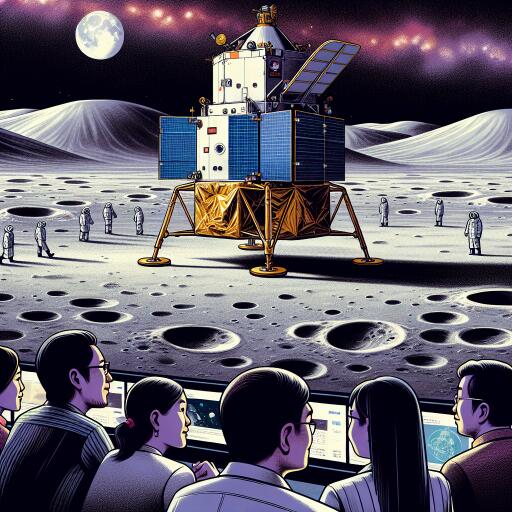
China’s Chang’e 6 Mission Set to Unveil the Moon’s Hidden Mysteries with Far Side Samples
In an unprecedented voyage of discovery, China’s Chang’e 6 mission is poised to illuminate the enigmatic far side of the moon, an area that has remained uncharted and enigmatic until now. This pivotal moment in lunar exploration is marked by the mission’s scheduled return to Earth on June 25, bearing the first samples collected from the moon’s lesser-known hemisphere. The anticipation among the scientific community is palpable, as these samples hold the potential to unveil lunar secrets that have puzzled scientists for decades.
The Chang’e 6 spacecraft embarked on its journey to the moon’s far side nearly two months ago, charting a course that has led it to collect approximately 4.4 pounds (2 kilograms) of lunar specimens. These specimens are not just rocks and soil; they are keys to unlocking the mysteries of the moon’s geologic and cosmic history. Upon its return, the spacecraft is expected to touch down in Inner Mongolia, a region in northern China, making a historic delivery of these lunar treasures to Earth.
The significance of these samples cannot be overstated. Until now, all lunar samples returned to Earth originated from the moon’s near side, with missions such as NASA’s Apollo flights and the Soviet Luna 16 having made their contributions to our lunar collections. However, the Chang’e 6 mission represents a milepost in lunar exploration by targeting the moon’s far side— a hemisphere that has evaded direct observation and analysis due to its position.
The intrigue surrounding the far side of the moon is not merely a matter of geography. Scientifically, it holds the answers to some of the most compelling questions in lunar research. Experts, including geologists from the Chinese Academy of Sciences, anticipate that the Chang’e 6 samples will shed light on the geologic activities that created the stark differences observed between the moon’s two hemispheres. Such insights are critical for enhancing our understanding of the moon’s formation, its evolutionary history, and the complex processes that have shaped not only the moon but the broader dynamics of our solar system.
With the arrival of these samples, a select group of scientists will have the unprecedented opportunity to examine up-close the substances that comprise the lunar far side. These investigations are expected to lead to groundbreaking findings, contributing significantly to our body of knowledge on lunar science. The analytical techniques that will be employed to study these samples are poised to yield data of unparalleled accuracy and depth, promising to open new chapters in the story of our celestial companion.
The Chang’e 6 mission is a testament to the relentless human pursuit of knowledge and our undying curiosity about the cosmos. As the spacecraft makes its journey back to Earth with its precious cargo, it carries with it not just physical samples, but the hopes and dreams of a global community of scientists and space enthusiasts. The insights gleaned from this mission are poised to redefine our understanding of the moon and inspire future generations to continue exploring the boundless frontiers of space.





Leave a Reply